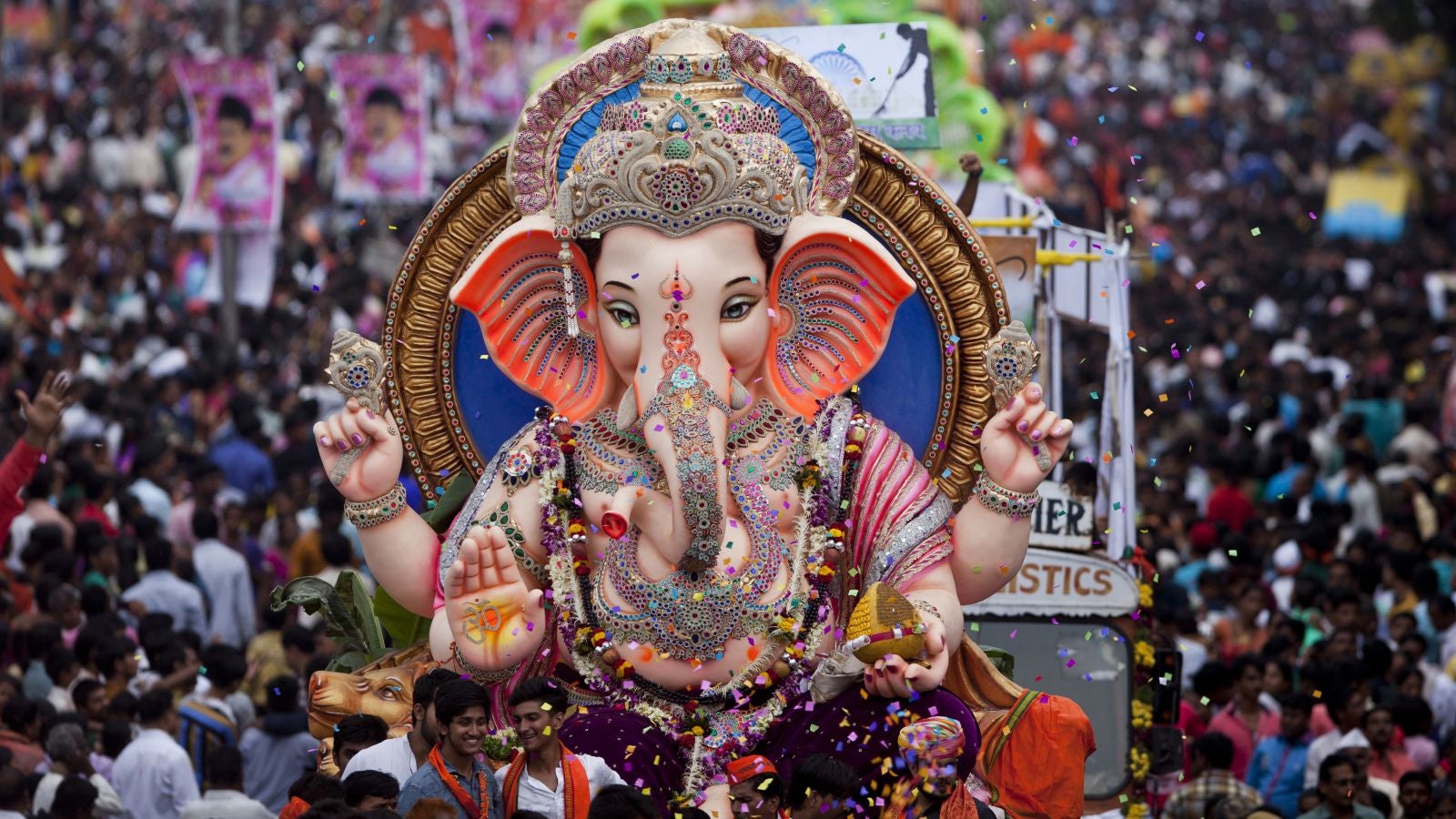Ganesh, the remover of obstacles, also needs insurance
In India, even gods need protection.


In India, even gods need protection.
The 10-day Ganesh Chaturthi festival, celebrating the birth of Hindu god Ganesh, began today (Sept. 13). It involves installing small—and sometimes giant—idols of the elephant god at homes and in common areas of the neighbourhood. The installation, maintenance, performance of rituals, and transport of these elaborately decorated idols require large-scale logistical planning, particularly so for the massive ones.
This year, over 300,000 Ganesh idols have been installed across the western state of Maharashtra, including over 2,000 large- to mid-sized ones in the state capital Mumbai, where the festival is the most popular.
Over the next three weeks, music, dance, sound-light shows, and sloganeering will mark the revelry, besides pious chants and community rituals.
But a lot can go wrong, too.
From fire accidents and stampedes to theft and floods, calamity is always lurking in the shadows.
So, to ensure the god and his devotees’ safety, the larger pandals—often elaborately decorated canopies, which over the years have come to symbolise the neighbourhood festival-organising teams—have sought refuge in insurance.
In Mumbai, they have reportedly taken a cumulative insurance cover of Rs600 crore ($83.3 million), up 20% from last year.
The richest such festival committee, the Gowd Saraswat Brahman (GSB) Ganesh Seva Mandal at King’s Circle in central Mumbai, has taken a cover of Rs264.75 crore for its five-day celebrations. During this time, the GSB pandal will house a 14.5 feet tall Ganesh idol.
“The idol is adorned with 70kg of gold and over 350kg of silver,” RG Bhat, a GSB committee member, told Quartz. “Nearly a million people come to pray at our 80,000 square feet pandal and we have 3,500 committee volunteers who help us. In order to ensure their safety and make sure that all the risks are covered, we take an insurance every year.”
Typically, these policies cover most things that can go wrong: natural calamities, stampede, theft or damage of the idol and its jewellery, fire-related damages, and personal accidents of devotees and workers, among other things.
Other pandals, too, have sought insurance, even if modest in their cover. For instance, Lalbaugcha Raja, one of Mumbai’s most popular, has a Rs25 crore cover. Andhericha Raja in the western suburb of Andheri has nearly Rs3.5 crore, according to committee members.
“The paraphernalia of the festival necessitates an insurance cover as it covers everything from the time the jewellery is withdrawn from the lockers till the visarjan (immersion of the idol),” said Sanjay Datta, chief of underwriting and claims at ICICI Lombard, a private sector general insurance company. “The premium is typically 1% of the total sum insured.”
In fact, even mid- and small-sized festival teams now avoid risks, though the overall number of pandals opting for insurance is still low, mainly due to the cost involved.
Even though government firms National Insurance Company, New India Assurance, Oriental Insurance Company, and United India Insurance Company enjoy dominance in this business, private firms are gaining ground, according to Datta.
But going by the elephant god’s need for protection, there should be enough to go around for everyone.